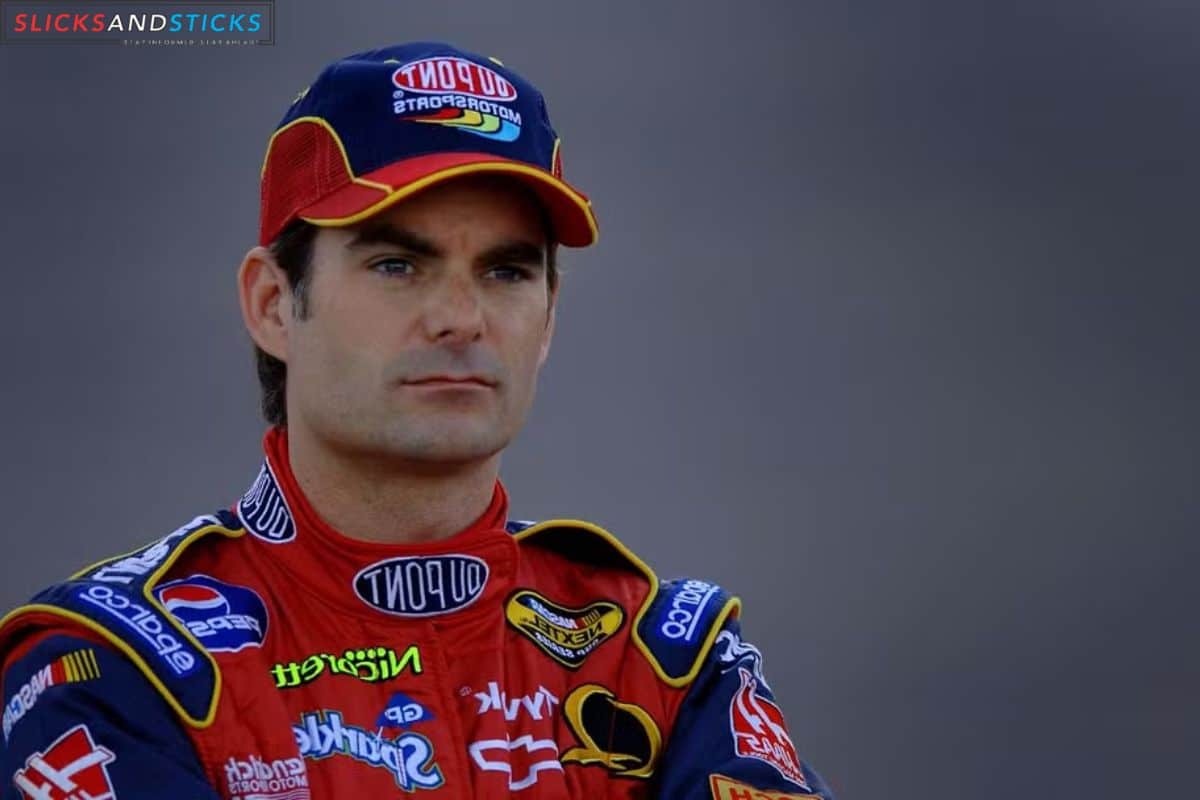The T-Rex Phenomenon: In the world of NASCAR, where high-speed thrills and fierce competition define the sport, one car emerged as a game-changer. The T-Rex phenomenon, fueled by the dominance of Jeff Gordon’s car, sent shockwaves through the racing world.
This analytical exploration digs into the remarkable impact of Gordon’s dominant car, dissecting the reasons behind its exceptional performance and the subsequent response from NASCAR. With a style that is both insightful and engaging, this examination uncovers the modifications made to the T-Rex car and the lasting legacy it left behind.
Designed for an audience seeking mastery, this narrative offers a unique perspective on how one car revolutionized the sport and forever altered the landscape of NASCAR.
Key Takeaways
- The T-Rex car, introduced by Hendrick Motorsports and designed by Ray Evernham and his team, pushed the boundaries of performance and aerodynamics in NASCAR.
- The car’s exceptional performance was attributed to its sleek and aerodynamic design, advanced technology, and meticulous engineering.
- NASCAR responded to the T-Rex car’s success by immediately banning it due to concerns about its radical design and potential impact on fair competition.
- The T-Rex car’s legacy includes forcing NASCAR to reassess rules and regulations, inspiring other teams and drivers to push the boundaries of innovation, and solidifying Jeff Gordon’s status as a racing legend.
Introduction and Background
The introduction of the T-Rex car by Hendrick Motorsports marked a significant milestone in NASCAR history, showcasing its unique success at the All-Star event. This innovative vehicle, designed and developed by Ray Evernham and his team, pushed the boundaries of performance and aerodynamics. With its sleek design, advanced technology, and meticulous engineering, the T-Rex car quickly became a force to be reckoned with on the race track.
The T-Rex car’s debut at the All-Star event was nothing short of sensational. Jeff Gordon, the talented driver behind the wheel, dominated the competition, leaving his rivals in awe of the car’s superior speed and handling. The T-Rex car’s ability to navigate through corners effortlessly and maintain high speeds on straightaways gave Gordon a significant advantage over his competitors.
However, NASCAR’s swift decision to ban the T-Rex car raised eyebrows and sparked debates among fans and experts. The governing body cited concerns over the car’s legality, claiming that its design violated certain regulations. Despite the ban, the T-Rex car’s impact on the sport was undeniable, forever changing the way teams approached car development and aerodynamics.

The T-Rex Car’s Exceptional Performance
Jeff Gordon‘s mastery behind the wheel of the T-Rex car showcased its unparalleled performance and revolutionized the NASCAR track. Here are four reasons why the T-Rex car’s performance was exceptional:
- Enhanced aerodynamics: The T-Rex car’s body design and modifications allowed for reduced drag and improved downforce, resulting in increased speed and stability on the track.
- Superior handling: The innovative adjustments made to the suspension and chassis of the T-Rex car provided Jeff Gordon with precise control and responsiveness, enabling him to navigate corners with unmatched precision.
- Unmatched power: The T-Rex car was equipped with a powerful engine that delivered exceptional acceleration and top speed, giving Gordon a significant advantage over his competitors.
- Consistent performance: Unlike other cars on the NASCAR circuit, the T-Rex car demonstrated remarkable reliability, allowing Gordon to maintain his dominant performance throughout races.
The T-Rex car’s exceptional performance not only propelled Jeff Gordon to victory but also raised the bar for future NASCAR vehicles, forever leaving a mark on the sport.

NASCAR’s Response and Prohibition
How did NASCAR respond to the T-Rex car’s dominant performance? NASCAR was taken aback by the T-Rex car’s exceptional performance and sought to address the potential impact it could have on fair competition. In response, NASCAR immediately banned the T-Rex car after its first race. The prohibition was based on their concerns about the car’s radical design and its overwhelming dominance on the track. To provide a better understanding of NASCAR’s response, the following table outlines the key actions taken by NASCAR in response to the T-Rex car:
| NASCAR’s Response and Prohibition |
|---|
| Immediate ban on the T-Rex car after its first race |
| Prohibition based on concerns about the car’s radical design |
| Addressing the potential impact on fair competition |
| Striving to maintain a level playing field for all competitors |
NASCAR’s response and prohibition demonstrated their commitment to ensuring fair and competitive racing, even if it meant imposing restrictions on exceptional vehicles like the T-Rex car.
Modifications and Post-Ban Outcome
Following NASCAR’s immediate ban on the T-Rex car, modifications were made to comply with regulations, leading to a significant shift in the car’s performance and its impact on the racing world.
The post-ban outcome of the T-Rex car can be summarized as follows:
- Decreased downforce: The modifications aimed to reduce the car’s aerodynamic advantage, resulting in a decrease in downforce. This affected the car’s grip and stability on the track.
- Altered suspension: Changes were made to the car’s suspension system to ensure compliance with NASCAR regulations. This impacted the car’s handling and responsiveness during races.
- Reduced speed: The modifications resulted in a decrease in the T-Rex car’s top speed. This made it more challenging for Jeff Gordon to maintain his dominant position on the track.
- Limited success: Despite the modifications, the T-Rex car never regained its former glory. Its performance became more comparable to other cars in the NASCAR Cup Series, and Jeff Gordon’s success in the car declined.
The modifications made to the T-Rex car had a profound impact on its performance and the overall racing landscape. NASCAR’s ban and subsequent modifications demonstrated the governing body’s commitment to maintaining a level playing field and ensuring fair competition in the sport.

The Legacy and Impact of the T-Rex Car
The lasting impact of the T-Rex car on NASCAR can be seen in the significant changes it brought to the racing landscape. The T-Rex car, with its revolutionary aerodynamic design and dominant performance, forced NASCAR to reassess its rules and regulations.
This car showcased the potential for technological advancements to greatly enhance a team’s competitive edge. As a result, NASCAR implemented stricter regulations to limit the extent of modifications allowed on race cars, aiming to level the playing field and promote fair competition.
The T-Rex car’s legacy also extends beyond its impact on the sport itself. Its success propelled Jeff Gordon’s career and solidified his status as a racing legend.
Furthermore, it inspired other teams and drivers to push the boundaries of innovation, leading to further advancements in the sport. The T-Rex car forever changed the way NASCAR approached racing, leaving a lasting impact on the sport’s history.
Conclusion of The T-Rex Phenomenon
The T-Rex car’s exceptional performance shook up NASCAR and forced the organization to respond with a prohibition. Despite the ban, the modifications made to the car and its subsequent impact on the sport’s legacy cannot be ignored.
The T-Rex car serves as a testament to the innovative and competitive spirit of NASCAR, leaving a lasting impression on fans and competitors alike.
ALSO READ: Jeff Gordon Drives Against Cancer: Win a Corvette for a Cause
